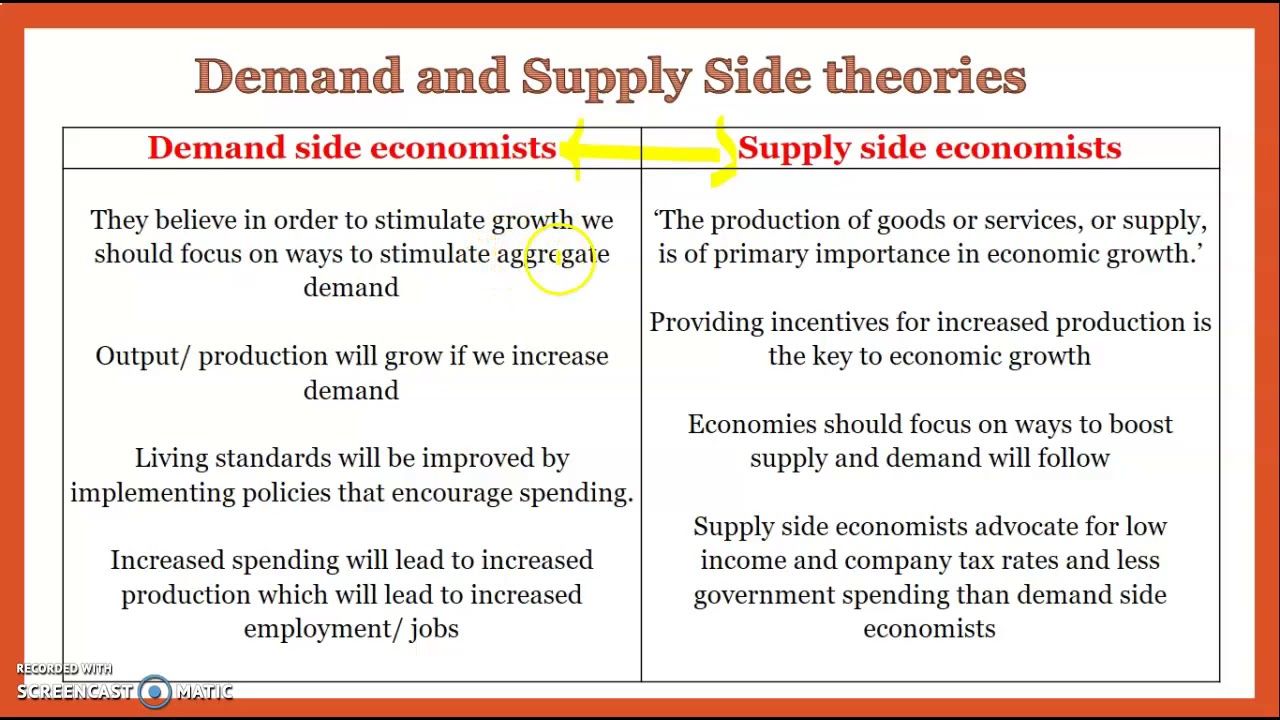What Is Supply-Side Economics?
Supply-side economics is a theory that maintains that increasing the supply of goods and services is the engine of economic growth. It advocates tax cuts to encourage job creation, business expansion, and entrepreneurial activity.
Supply-side economics may be seen as the polar opposite of Keynesian economics, or demand-side economics, which asserts that boosting demand for goods and services is the key driver of economic growth.
Supply-side economics is sometimes known as Reaganomics for its association with President Ronald Reagan. He and his Republican contemporaries popularized the controversial idea that tax cuts for wealthy investors and businesses give them incentives to save and invest, producing economic benefits that trickle down into the overall economy.
President Reagan often quoted the aphorism “a rising tide lifts all boats” to explain his take on the theory.

KEY TAKEAWAYS
- Supply-side economics is an economic theory that postulates tax cuts for the wealthy, resulting in increased savings and investment capacity that trickle down to the overall economy.
- President Ronald Regan was a staunch believer in supply-side economics, resulting in “Reaganomics.” It is also known as trickle-down economics.
- The intended goal of supply-side economics is to explain macroeconomic occurrences in an economy and offer policies for stable economic growth.
- The three pillars of supply-side economics are tax policy, regulatory policy, and monetary policy.
- The core point of supply-side economics is that production (i.e., the “supply” of goods and services) is the most important in determining economic growth.
- Keynesian economics, or demand-side economics, believes that the level of demand in the economy is the key driving factor to economic growth rather than supply.
Understanding Supply-Side Economics
Like most economic theories, supply-side economics tries to explain macroeconomic phenomena and—based on these explanations—offers policy prescriptions for stable economic growth.
In general, the supply-side theory has three pillars: tax policy, regulatory policy, and monetary policy. However, the idea behind all three pillars is that production (i.e., the “supply” of goods and services) is the most important in determining economic growth.
The supply-side theory is typically held in stark contrast to the Keynesian theory, which, among other facets, includes the idea that demand can falter, so if lagging consumer demand drags the economy into recession, the government should intervene with fiscal and monetary stimuli.
This is the single significant distinction: a pure Keynesian believes that consumers and their demand for goods and services are vital economic drivers. In contrast, a supply-sider believes that producers and their willingness to create goods and services set the pace of economic growth.
The Argument That Supply Creates Its Demand
In economics, we review the supply and demand curves. The chart below illustrates a simplified macroeconomic equilibrium: aggregate demand and aggregate supply intersect to determine overall output and price levels. (In this example, the outcome may be the gross domestic product, and the price level may be the Consumer Price Index.)





